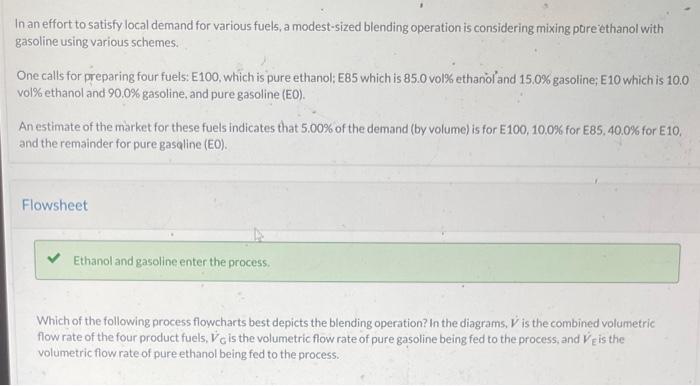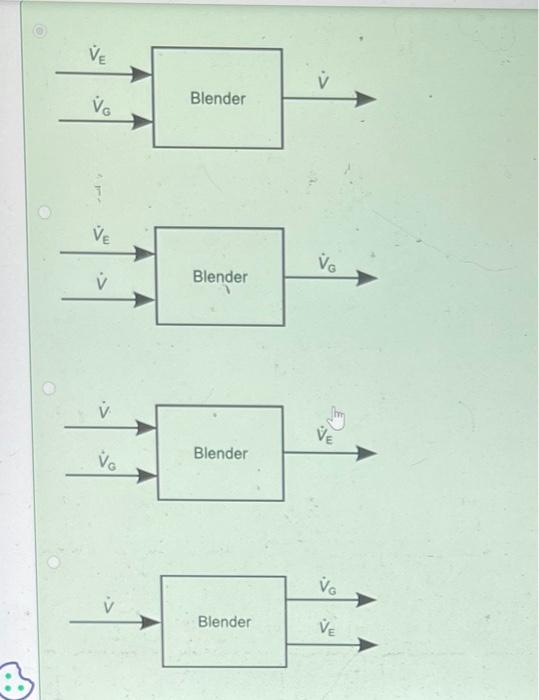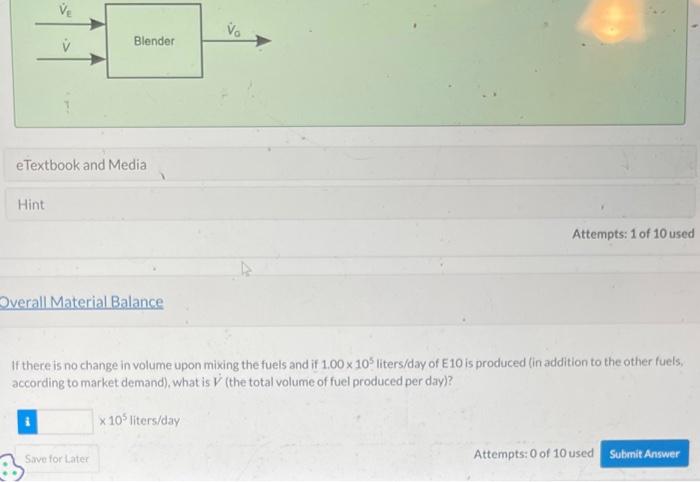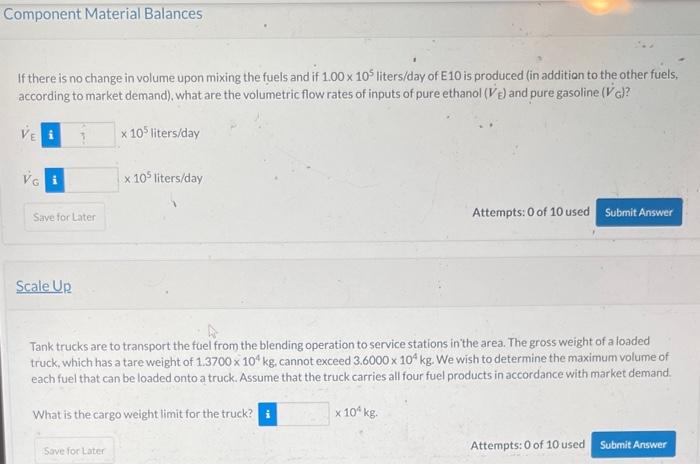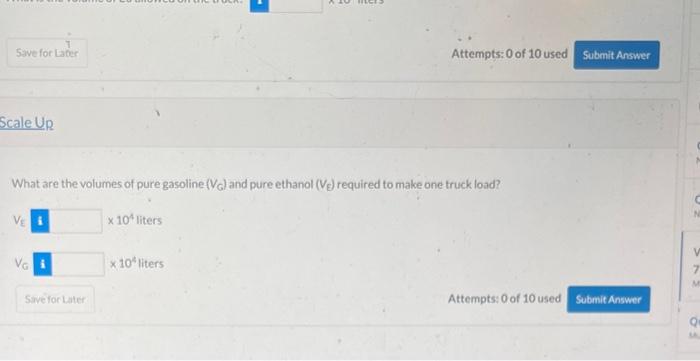In an effort to satisfy local demand for various fuels, a modest-sized blending operation is considering mixing pure ethanol with gasoline using various schemes. One calls for preparing four fuels: E100, which is pure ethanol: E85 which is 85.0 vol\% ethanol and 15.0% gasoline; E10 which is 10.0 vol\% ethanol and 90.0% gasoline, and pure gasoline (EO). An estimate of the market for these fuels indicates that 5.00% of the demand (by volume) is for E100, 10.0\% for E85. 40.0% for E10, and the remainder for pure gasaline (EO). Flowsheet Which of the following process flowcharts best depicts the blending operation? In the diagrams, V is the combined volumetric flow rate of the four product fuels, VG is the volumetric flow rate of pure gasoline being fed to the process, and V is the volumetric flow rate of pure ethanol being fed to the process. Attempts: 1 of 10 used If there is no change in volume upon mixing the fuels and if 1.00105 liters/day of E10 is produced (in addition to the other fuels, according to market demand), what is V (the total volume of fuel produced per day)? 105Iiters/day If there is no change in volume upon mixing the fuels and if 1.00105 liters/day of E10 is produced (in addition to the other fuels. according to market demand), what are the volumetric flow rates of the product streams E100, E85, and EO (pure gasoline)? VE100VE85VE0104liters/day104liters/day104liters/day Attempts: 0 of 10 used Component Material Balances If there is no change in volume upon mixing the fuels and if 1.00105 liters/day of E10 is produced (in addition to the other fuels. according tomarket demand), what are the volumetric flow rates of inputs of pure ethanol (VE) and pure gasoline (Vc) ? 105 liters/day If there is no change in volume upon mixing the fuels and if 1.00105 liters/day of E10 is produced (in addition to the other fuels, according to market demand), what are the volumetric flow rates of inputs of pure ethanol (VE) and pure gasoline (VG) ? Attempts: 0 of 10 used Scale Up Tank trucks are to transport the fuel from the blending operation to service stations in the area. The gross weight of a loaded truck, which has a tare weight of 1.3700104kg, cannot exceed 3.6000104kg. We wish to determine the maximum volume of each fuel that can be loaded onto a truck. Assume that the truck carries all four fuel products in accordance with market demand. What is the cargo weight limit for the truck? 104kg. Attempts: 0 of 10 used Take as a basis 2.5000105 liters of combined fuel product. Assume the specific gravity of gasoline is 0.726 and the specific gravity of ethanol is 0.789. What is the mass of the volume of combined fuel product? 105kg What is the total volume of cambined fuel allowed on the truck? 104 liters What is the volume of E100 allowed on the truck? 104 liters What is the volume of E85 allowed on the truck? 104 liters What is the volume of E10 allowed on the truck? 104 liters What is the volume of EO allowed on the truck? 104 liters What are the volumes of pure gasoline (VG) and pure ethanol (VE) required to make one truck load? VVG104liters104liters Attempts: 0 of
